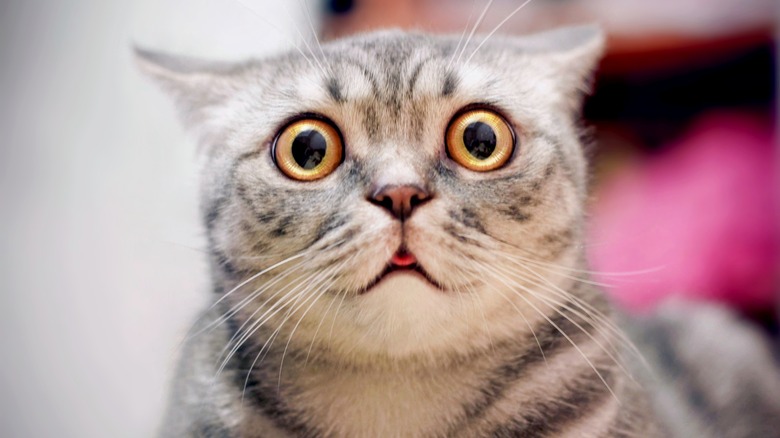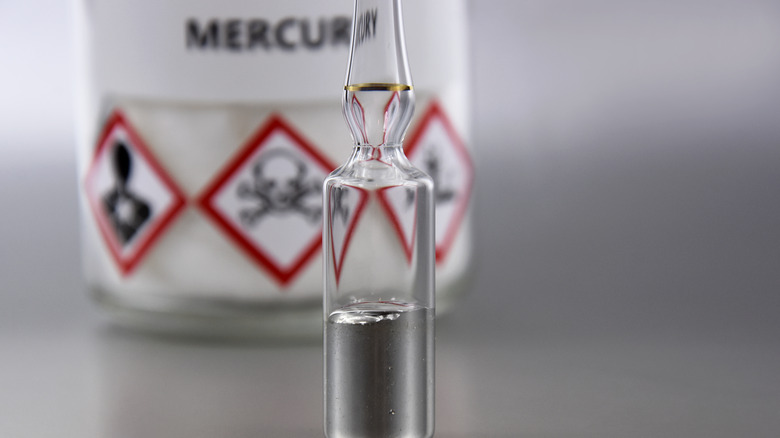Convulsing Cats In Japan Once Led To The Discovery Of A Fatal Toxic Outbreak
Cat behavior is always intriguing, and often hilarious. What happened to one group of cats in Japan was no laughing matter, though. It provided a tragic warning about a disaster that proved to be frighteningly widespread.
Cats generally enjoy around 15 hours of sleep every day. That may sound like luxury to many of us, but there's much more to a cat's day than just that. While they're awake, they're also mewling at mealtimes, lurking in hidden places humans wouldn't think to look, and other wholesome kitty pastimes.
The cats of Minamata in the 1950s started to develop behaviors that couldn't be explained even by the creatures' usual enigmatic standards. "In the early 1950s, locals started seeing what looked like the cats dancing," reported Hank Green on SciShow (via YouTube) in 2017. "They would jerk around uncontrollably, making terrifying noises." By 1956, Green goes on, humans had begun behaving in the same manner.
The Minamata disaster
What was affecting this Japanese town? Chisso Corporation, which was operating in the area, was releasing something very dangerous into the bay. The factory's work produced significant amounts of waste mercury, which was flushed away into the water.
Mercury does not just exist in metallic form. According to the World Health Organization, "exposure mainly occurs through consumption of fish and shellfish contaminated with methylmercury and through worker inhalation of elemental mercury vapours during industrial processes." In Minamata, the former case seems to have been prevalent. Once that mercury made it into the bay, it was ingested by sea life. In turn, the locals (both feline and human) unknowingly consumed said sea life and potentially significant amounts of mercury too.
The WHO lists uncontrollable movements (such as those the cats were exhibiting) among numerous effects of mercury poisoning, which include disturbances to memory and sleeping and kidney failure. Minamata disease, as the effect caused by this tragic outbreak is now known, reportedly affected at least 50,000 people, though Science says a modest number of "more than 2000 cases of Minamata disease were certified."
The dangers of mercury poisoning
In 1996, the Japanese government begin a program to provide compensation to those affected. This amounted to a monthly payment of approximately £120 and a one-off £1,500 to be paid by the chemical company itself.
The true scale of the disaster, and the dispensing of adequate compensation, continues to be a battle. In March 2011, The Japan Times reported that a series of high-profile court cases concluded that "Chisso will provide some 90 percent of the plaintiffs with a ¥2.1 million (approximately $15,600) lump sum each as well as a ¥3.15 billion (around $23.5 million) fund, and the central and prefectural governments will shoulder part of their medical costs."
The disaster continues to serve as a stark reminder that, though mercury does exist in nature, human behavior and habits have an enormous effect on all aspects of the world around us. As we find new ways to adapt to our ever-changing world, corporate responsibility will have to be key. If it isn't, it'll find a way to come back and bite us. Again.


